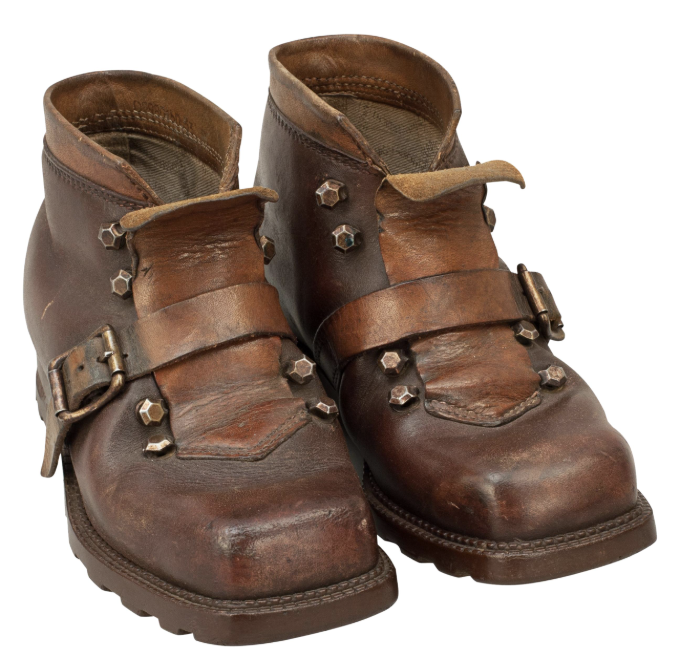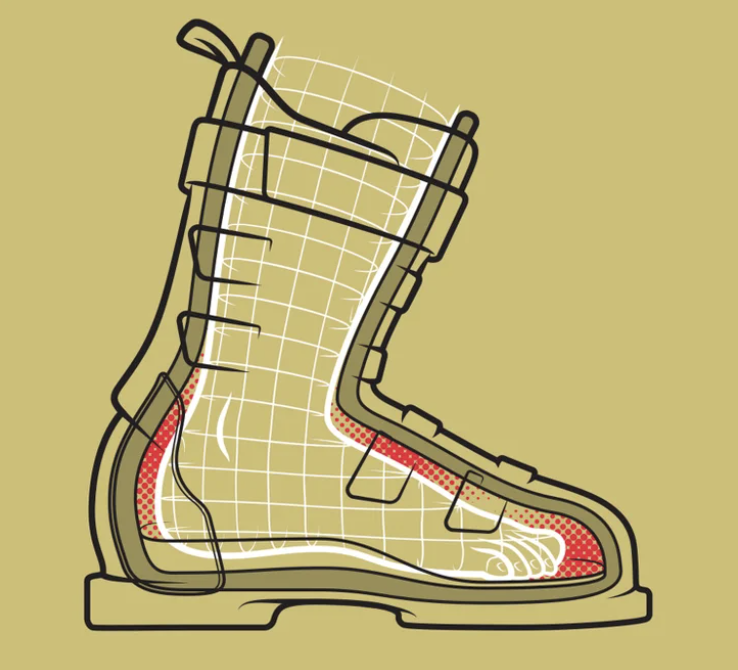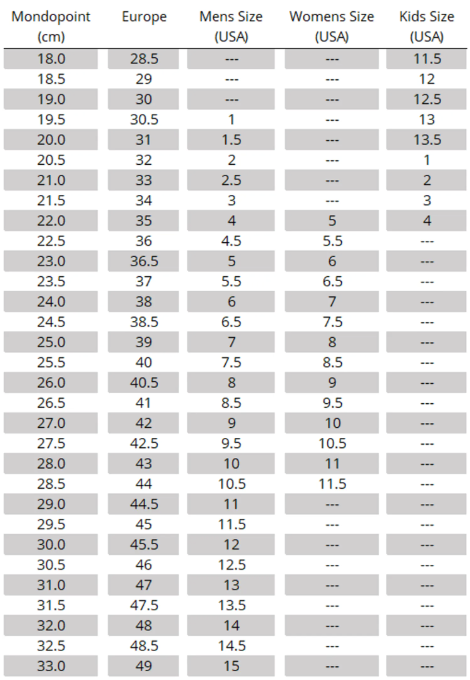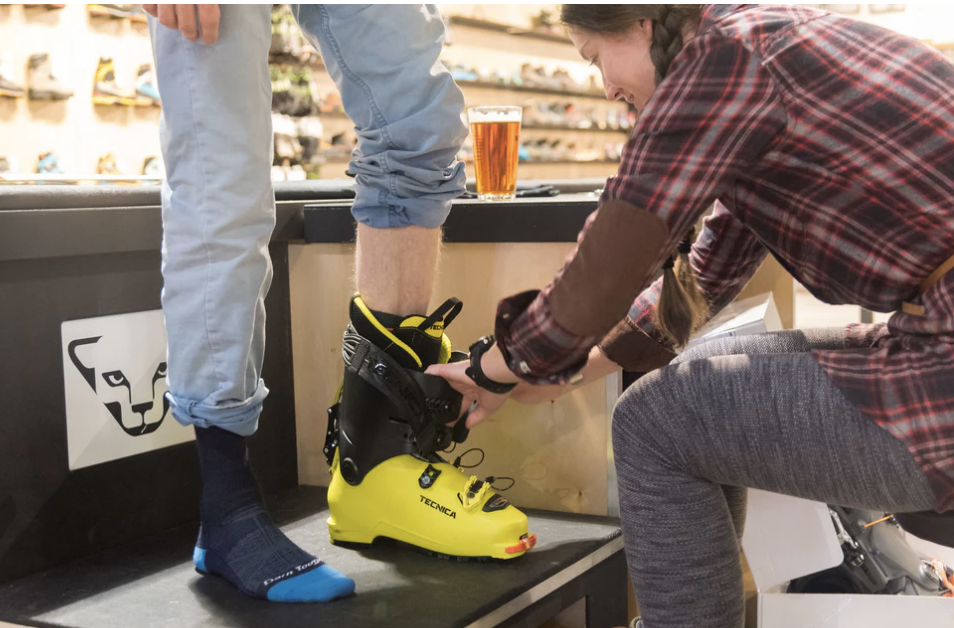How to Find the Right Ski Boot Fit
Ski boot sizing varies between brands and models, so it's crucial to consult the manufacturer's size chart for the specific boots you're considering. SENDY is here to guide you through the process of finding the perfect fit for comfort, performance, and control.

Understanding Ski Boot Sizing: The Mondopoint System
Ski boots use the Mondopoint sizing system, which measures foot length in centimeters. This universal sizing system was first developed in the 1970s by the ski industry and is still used today. The Mondopoint size directly corresponds to the length of the boot's inner sole, ensuring a more precise fit than traditional shoe sizing.

https://www.skimag.com/gear/how-tight-should-new-ski-boot-be
Measuring Your Foot for Ski Boots
Measure Both Feet:
Use a ruler, tape measure, or a Brannock device to measure the length of each foot from the heel to the tip of your longest toe.
Always use the measurement from your larger foot if there’s a difference.
Consider Foot Width:
Ski boots come in different last widths (the width of the forefoot in millimeters), typically categorized as:
Narrow (97-98mm) – Best for those with slim feet or seeking a high-performance fit.
Medium (100-102mm) – Works well for most skiers.
Wide (103mm+) – Designed for skiers with broader feet.
Match Your Measurements to the Manufacturer’s Size Chart:
Once you have your foot length in centimeters, refer to the specific brand's sizing chart, as fit can vary across manufacturers.
Printable Brannock Device
https://cdn.shopify.com/s/files/1/0086/8234/0410/files/Mens_Fitting_Chart.pdf?v=1718657833

Choosing the Right Fit Based on Skiing Style & Ability
Your skill level and skiing style influence how snug your boots should feel:
Performance Fit (Advanced/Expert Skiers)
A snug, precise fit provides maximum control and responsiveness.
The toes may lightly touch the front when standing upright but should pull back slightly when flexing into a ski stance.
Typically, these boots feel tight initially, but liners mold to your foot over time.
Comfort Fit (Beginners & Casual Skiers)
A slightly roomier fit offers more comfort, especially for those who ski occasionally.
Toes should have some wiggle room when standing but should not slide around.
This fit prioritizes warmth and ease over aggressive performance.

Do Ski Boots Come in Half Sizes?
Technically, ski boots do not have true half sizes. If a boot is labeled as a half size (e.g., 27.5 instead of 27), it usually shares the same shell and liner as the next full size (e.g., 27.5 and 28.0 are often identical). Some manufacturers include a shim or insole adjustment to fine-tune the fit.
Testing Fit & Comfort
Try on multiple brands and models—each has a unique fit profile, even within the same Mondopoint size.
Wear thin ski socks (not thick winter socks) to get the most accurate fit.
Buckle the boots up and flex forward—your heel should stay in place, and your toes should not hit the front aggressively.
Consider professional boot fitting—a boot fitter can make precise adjustments, heat-mold liners, or customize footbeds for the best fit.

A Snug Fit is Normal!
Ski boots should feel firm but not painful when new. The liners will pack out (compress and mold to your foot) over time, so avoid buying a boot that feels too spacious at first.
Investing time in finding the right fit will enhance your skiing experience, keeping you comfortable and in control on the slopes.
